LED tri proof light offers durability in adverse conditions by incorporating water, dust, and impact resistance features. Rated IP65 or higher, these lights are designed for industries such as outdoor locations, warehouses, and factories. LED tri-proof lights ensure reliable performance where standard lights would fail.
This article will provide detailed instructions for LED tri-proof lights and how to choose them. Let’s dive!
What is an LED Tri-Proof Light?
From the name “Tri” (derived from Triple), these fixtures are designed to offer you three excellent features: water/moisture-proof, dustproof, and impact-resistant. This means these lighting fixtures cannot be damaged by water/vapor, dust, or impact from drops or flying projectiles. That’s why LED Tri-Proof fixtures are regarded as the toughest lights. They are ideal for extreme conditions and environments.
Due to their high resilience and damage-proof designs, these fixtures can be used in humid and dusty spaces, such as food processing factories, high-pressure car washes, parking lots, extremely humid warehouses, and swimming pool areas.
Why Should You Choose Tri-Proof LED Light?
When it comes to tri-proof LED fixtures, there are many reasons to buy them.
Waterproof, Dustproof, and Impact-Resistant
Tri-proof LEDs perform better in rough situations. Water doesn’t enter them, even if it rains heavily or you spray them down. Dust and dirt don’t enter, and internal components are protected. Their IP65/IP66 ratings prevent water and dust from entering. Their IK08/IK10 ratings avoid damage from impacts.
Long Lifespan and Energy Efficiency
These LEDs consume up to 70% less power than bulbs. They produce quality light with less power consumption, so electricity bills are conserved. One fixture lasts 50,000+ hours with continuous use for 5 years. No frequent replacements translate to cost savings on labor and materials. They maintain the same intensity of light and do not dim or decrease brightness. Besides, they are perfect for 24/7 applications such as supermarkets or warehouses. Less energy wastage is suitable for green goals. It saves money with less environmental strain.

Resistance to Harsh Environments
They are robust and fully shielded from premature failure. Tri-proof fixtures get their name because they are built to withstand some of the harshest working environments. These fixtures can handle it all, whether it’s a super-cold freezer, an excessively humid environment, dusty workspaces, or factories that experience occasional projectiles. Therefore, a tri-proof light is one of a few fixtures that guarantee you great value for your money and a secure, fool-proof lighting system.
Safe and Low Maintenance
LED tri proof light do not produce any IR or UV radiation. They shield sensitive products and skin. Non-heat-emitting. No frequent bulb replacement. No complicated repairs for years.
Advantages of LED Tri-proof Light Over Traditional Lighting Systems
- No warm-up time; full brightness immediately.
- Lasts 50,000+ hours vs. 10,000 hours for traditional bulbs.
- Uses 50-70% less power than fluorescent or incandescent lights.
- No mercury, UV emissions, or toxic materials.
- No flickering or dimming over time.
- Water/moisture-proof, dustproof, and impact-resistant.

Functions of LED Tri Proof Lights
The tri proof light LED comes with functionalities like:
1. Dimming
Dimming is the process of regulating the amount of light a fixture gives out. It reduces energy consumption and increases your fixture’s lifespan. This allows you to create an ambiance and adjust your fixture’s brightness to a comfortable level, depending on the activity. For example, low light is for relaxation, and bright light is for work.
2. Emergency Lighting
Another great feature of LED tri-proof lights is emergency lighting. These fixtures automatically switch on during emergencies, so you can see the problem and act before it’s too late.
3. Motion Sensor Lights
Do you want to keep your assets secure without using a lot of power? If so, you’ll find this LED light feature amazing.
How does it work?
Motion sensor lights are fixtures that stay off most of the time but switch on automatically as soon as their sensors detect movement. This makes them ideal for your safety whenever someone is moving close to them at night. The fact that they switch on automatically when there’s movement means that you’ll be made aware of an intruder’s presence early, giving you enough time to plot a suitable response to your current situation.
Factors To Consider When Choosing LED Tri-Proof Lights
Get this: When making a purchase – especially if it’s a bulk order – it’s always wise to have as much information as possible about the product. Below is a quick and easy checklist that will simplify your decision-making process:
1. Intended Purpose:
The first and most important factor is what you intend to illuminate with these lights. Knowing the purpose allows you to know:
- The type and size of the lighting fixture.
- How bright they have to be.
- How many will be necessary to illuminate your space fully?
- As well as the most ideal IP ratings.
2. Lighting Fixture Sizes and Shapes:
Knowing how big your ideal fixtures should be is important due to different spaces and intended uses. Start by planning and taking measurements. You’ll know how many fixtures you’ll need and how big (or in what shape) they should be to fit into your space seamlessly.
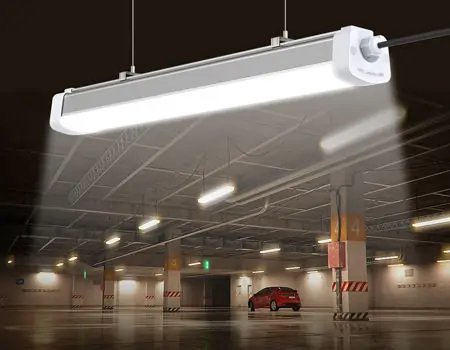
3. Color Temperature:
Do you know that light color temperature has the power to dictate mood? It also affects the productivity of your staff. That’s why it’s imperative to buy the right color and temperature lights, as they help to improve mood and productivity.
4. Lumen Output:
It’s important to remember that different work environments require different brightness levels. So, ask yourself: How much light do I need to illuminate my space sufficiently? Buying fixtures that give you sufficient lumen output is beneficial in many ways. With this in mind and a suitable wattage range mapped out, it will be easy for you to know the ideal luminous efficacy of your new fixtures.
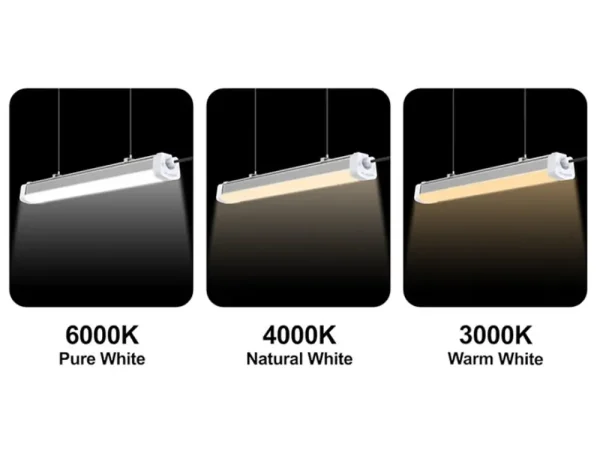
5. Wattage:
Well, the Wattage affects three critical aspects of a lighting system:
a. Wattage determines the fixture’s brightness. Once you know a light’s luminous efficacy, it’s easy to calculate how many watts are needed to yield the required brightness.
b. Power Load. This is the total stress your electrical system can handle to support your new lighting setup. Buying many LED fixtures (or any other type of light) without considering your power load can cause an electrical overload.
c. Overall Cost. Lastly, your monthly lighting energy expenditure will be determined by how many watts of power you consume during that period. So, it’s important to know how many wattages you’ll need and how much it will cost to maintain them so you can budget accordingly.
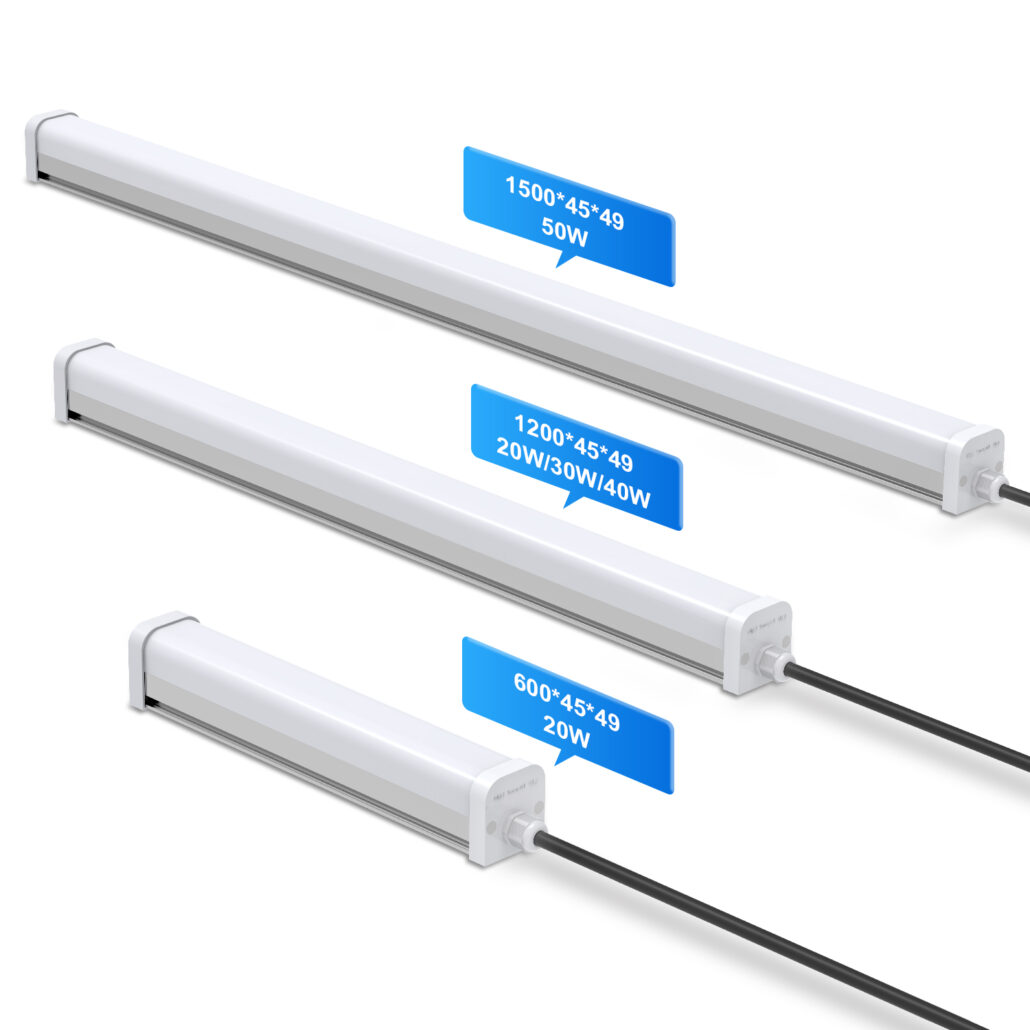
6. Dimming Capabilities:
Dimming is the process of regulating the amount of light a fixture gives out.
- It reduces energy consumption and increases your fixture’s lifespan.
- It allows you to create an ambiance.
- Depending on the activity, you can adjust your fixture’s brightness to a comfortable level.
For example, low light is used for relaxation, and bright light is used for work.
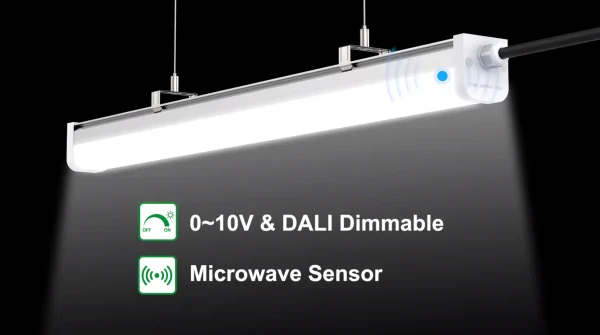
7. Installation Preferences:
You need to consider how your installation preferences match up to the lights you plan on buying.
- Ceiling Mounted Installation
- Suspended Installation
Imagine buying tri-proof fixtures meant for suspension lighting to use in a space that requires ceiling/wall-mounting. It will be a dreadful waste of your time, money, and effort, right? And that’s why you have to buy fixtures that match up to your installation needs.
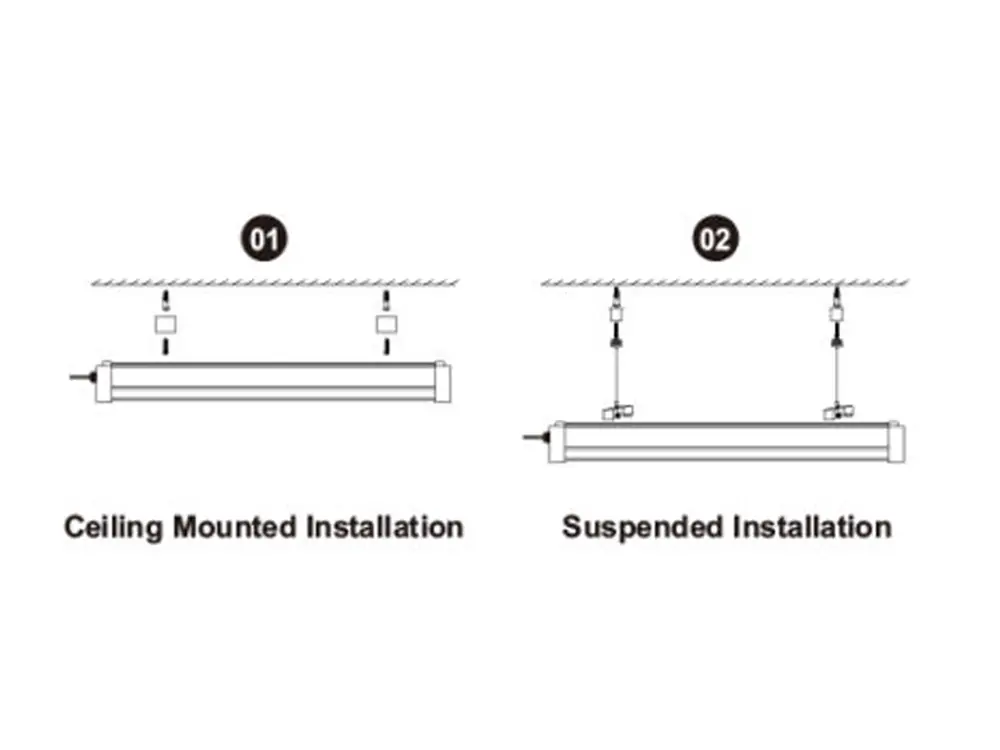
How to Find The Suitable LED Tri-Proof Light Manufacturer?
After you’ve considered all the factors, the next step is usually to find a suitable supplier.
Step 1 – Research the Market
You must search for the best products that meet your lighting needs and requirements. That means searching for the best LED fixtures and making comparisons to see which ones are ideal for you.
Note that:
Today, there are thousands of products from different manufacturers; some are of good quality, and vice versa. Therefore, your main goal during research is to identify a few good-quality LED lights out of the many available. For the best shopping experience, the fixture you choose must meet most, if not all, of your lighting needs.
Step 2 – Choose the Right LED Tri-proof Light Manufacturer
Once you have an ideal product, the next step is to find a reputable LED tri-proof light manufacturer. Search for light fixtures. Compare them and read through user ratings and reviews to find the best overall. Find out everything you can about the final product’s manufacturer. These include how long they’ve been in business, what their clients say about them, their manufacturing capacity, and any offers or deals they might have for bulk orders. You can determine which manufacturer will serve you the best at the end of this process.
Step 3 – Contact the Manufacturer
Contact the professional manufacturer to learn more about their products and services. Don’t be afraid to ask questions. It’s always better to be fully informed before committing to a bulk order. Also, speaking to a manufacturer lets you discuss any customizations you feel will work best for your space. Customized LED tri-proof may cost more than standard design fixtures. But having something unique and designed to serve you optimally is always worth the effort and money.
Luckily, with SE.Lighting at your side, you don’t need to follow these lengthy procedures. We have the tools, experience, and workforce needed to deliver quality lights on time. We offer customization. All our products are made using the best materials and fool-proof production to ensure the best quality.
Conclusion
Now you know everything there is to know about LED tri proof fixtures. SE.Lighting offers you some of the best fixtures in the market. We are committed to quality and better service delivery. Our tri-proof LEDs are made using the best materials, designs, and concepts so that we can offer you durable, efficient, and fool-proof LED fixtures. So don’t hesitate to contact us. We’ll be more than happy to hear from you.
